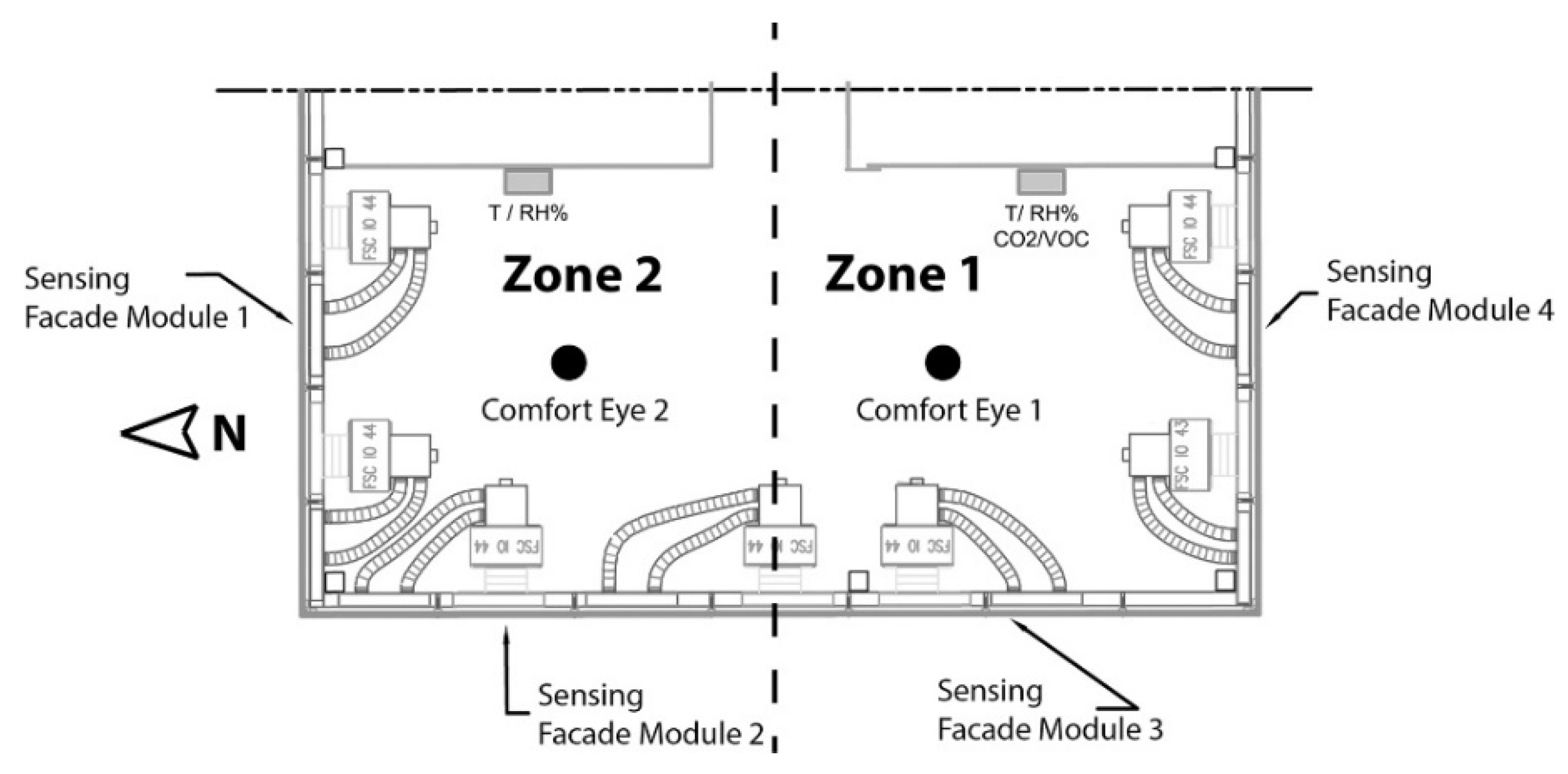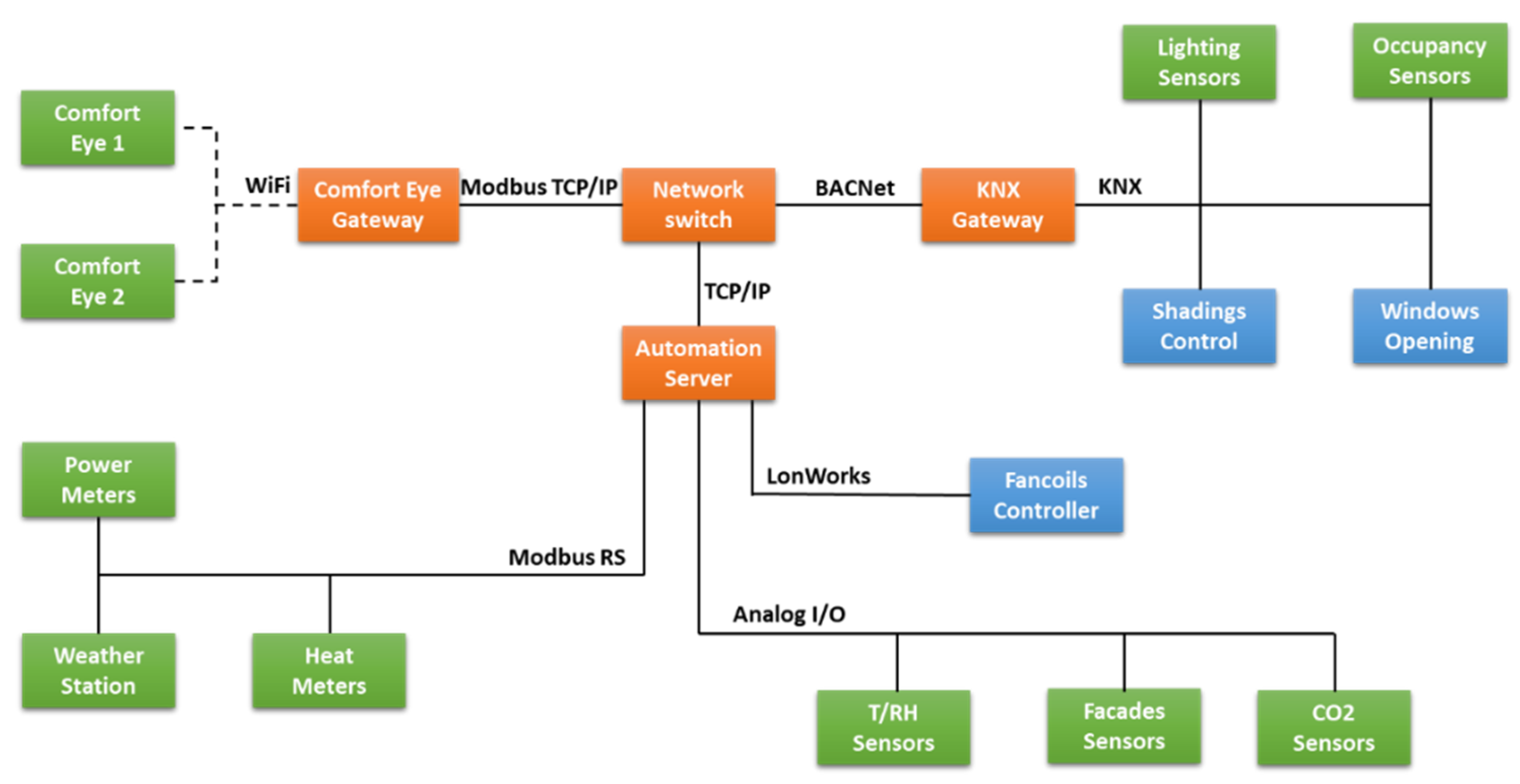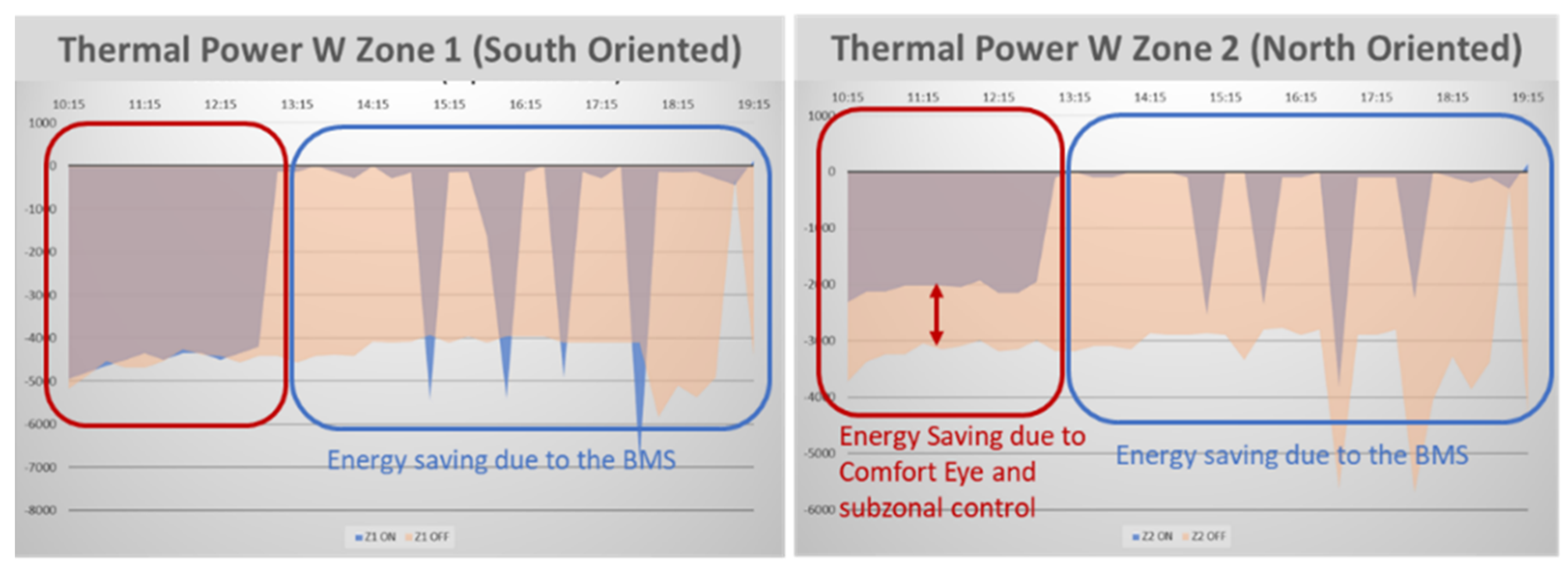A Sub-Zonal PMV-Based HVAC and Façade Control System for Curtain Wall Buildings †
Abstract
:1. Introduction
2. Materials and Methods
2.1. General Description of the Proposed System
2.2. Description of the Case Study
2.3. Monitoring and Control Architecture
2.3.1. Comfort Eye
2.3.2. Façade Module with Embedded Sensors
- Outdoor: solar radiation and illuminance on the vertical plan
- Indoor: solar radiation and illuminance on the horizontal plan
2.3.3. Building Management System
3. Results
- System ON: the BMS controls the HVAC making use of the real-time temperature setpoints provided by the Comfort Eye and the façade modules controlled according to the logics described above;
- System OFF: the BMS replicates the room operation before the installation of the sub-zonal solution. Temperature setpoint fixed at 26 °C in all sub-zones, fixed fans velocity and manual operation of windows, shadings and lights.
4. Conclusions
Funding
Conflicts of Interest
References
- Saheb, Y. Modernising Building Energy Codes to Secure Our Global Energy Future; IEA: Paris, France, 2013. [Google Scholar]
- Arasteh, D.; Selkowitz, S.E.; Apte, J. Zero Energy Windows. In Proceedings of the ACEEE Summer Study on Energy Efficiency in Buildings, Pacific Grove, CA, USA, 13–18 August 2006. [Google Scholar]
- Mingzhe, L.; Wittchen, K.B.; Heiselberg, P.K. Control strategies for intelligent glazed façade and their influence on energy and comfort performance of office buildings in Denmark. Appl. Energy 2015, 145, 43–51. [Google Scholar]
- Al Touma, A.; Ouahrani, D. Shading and day-lighting controls energy savings in offices with fully-Glazed façades in hot climates. Energy Build. 2017, 151, 263–274. [Google Scholar] [CrossRef]
- Zampetti, L.; Arnesano, M.; Revel, G.M. Experimental testing of a system for the energy-efficient sub-zonal heating management in indoor environments based on PMV. Energy Build. 2018, 166, 229–238. [Google Scholar] [CrossRef]
- Revel, G.M.; Arnesano, M.; Pietroni, F. Development and validation of a low-cost infrared measurement system for real-time monitoring of indoor thermal comfort. Meas. Sci. Technol. 2014, 25. [Google Scholar] [CrossRef]



Publisher’s Note: MDPI stays neutral with regard to jurisdictional claims in published maps and institutional affiliations. |
© 2018 by the authors. Licensee MDPI, Basel, Switzerland. This article is an open access article distributed under the terms and conditions of the Creative Commons Attribution (CC BY) license (https://creativecommons.org/licenses/by/4.0/).
Share and Cite
Arnesano, M.; Calvaresi, A.; Pietroni, F.; Zampetti, L.; Magnani, S.; Casadei, O.; Revel, G.M. A Sub-Zonal PMV-Based HVAC and Façade Control System for Curtain Wall Buildings. Proceedings 2018, 2, 1596. https://doi.org/10.3390/proceedings2151596
Arnesano M, Calvaresi A, Pietroni F, Zampetti L, Magnani S, Casadei O, Revel GM. A Sub-Zonal PMV-Based HVAC and Façade Control System for Curtain Wall Buildings. Proceedings. 2018; 2(15):1596. https://doi.org/10.3390/proceedings2151596
Chicago/Turabian StyleArnesano, Marco, Andrea Calvaresi, Filippo Pietroni, Lorenzo Zampetti, Sara Magnani, Oscar Casadei, and Gian Marco Revel. 2018. "A Sub-Zonal PMV-Based HVAC and Façade Control System for Curtain Wall Buildings" Proceedings 2, no. 15: 1596. https://doi.org/10.3390/proceedings2151596
APA StyleArnesano, M., Calvaresi, A., Pietroni, F., Zampetti, L., Magnani, S., Casadei, O., & Revel, G. M. (2018). A Sub-Zonal PMV-Based HVAC and Façade Control System for Curtain Wall Buildings. Proceedings, 2(15), 1596. https://doi.org/10.3390/proceedings2151596






